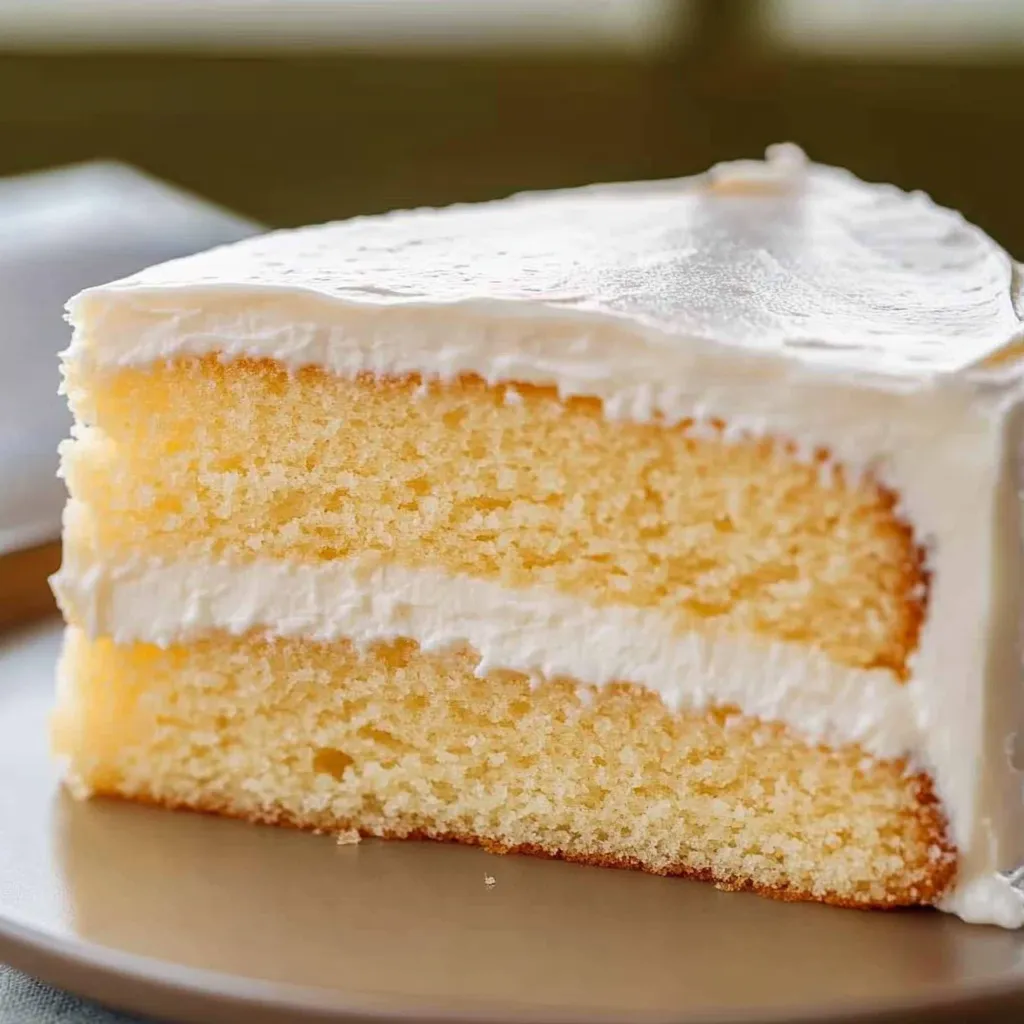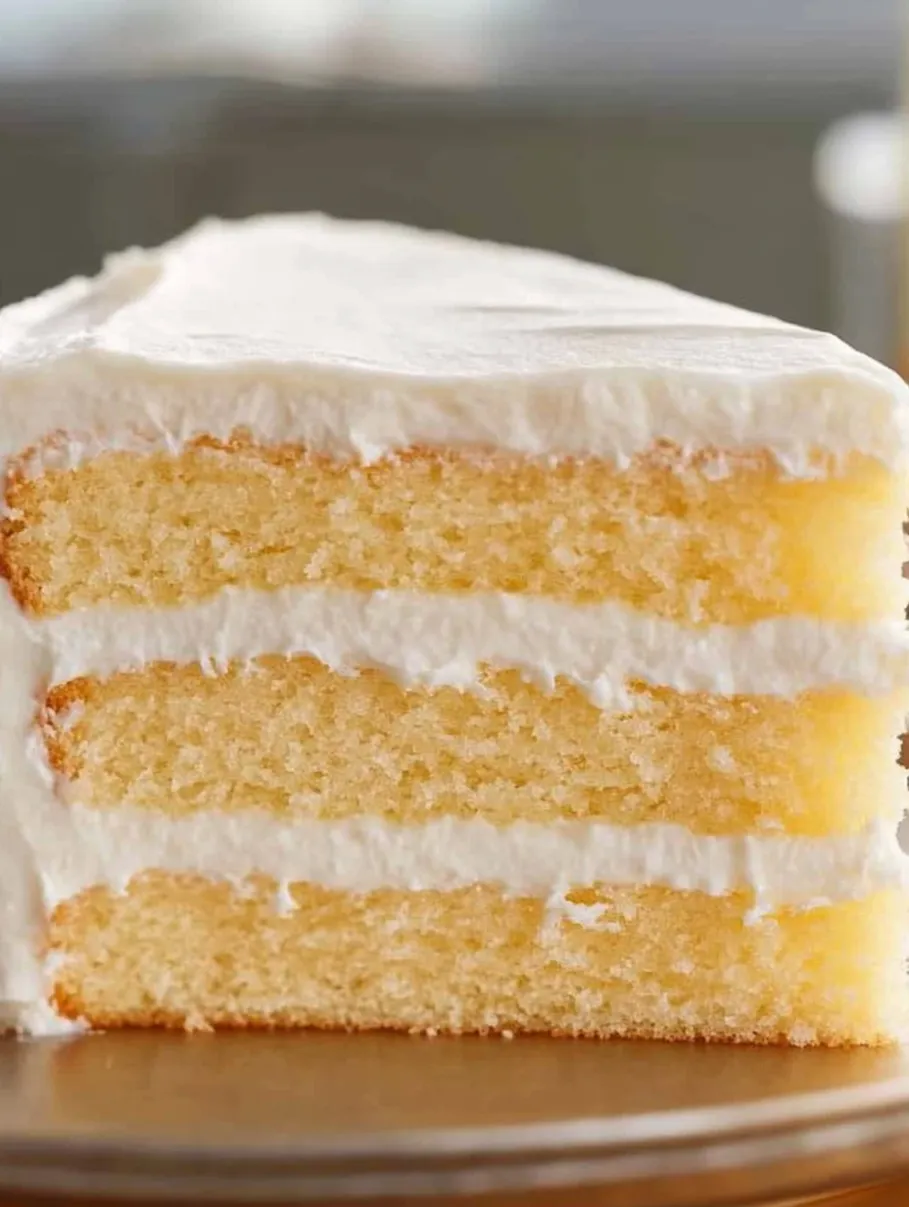 Save
Save
Vanilla Cake is the kind of crowd-pleaser I make for birthdays holiday gatherings or just when the mood strikes for something classic and comforting. Its moist crumb and rich vanilla flavor bring back memories of my grandma’s kitchen, especially when the homemade buttercream is swirled thick over each layer. This cake looks impressive but it uses simple steps and pantry basics that never fail.
I learned to perfect this recipe over years of celebrations. My favorite thing is watching my kids sneak tastes of the batter when I am not looking and fighting over who gets to lick the beater when the buttercream comes together.
Ingredients
- Unsalted butter: brings richness and keeps the crumb tender Use a good quality butter for best flavor
- Sugar: sweetens the cake and helps it turn golden Look for fine granulated sugar for the smoothest crumb
- Large eggs: provide structure and moisture Make sure they are at room temperature for easy blending
- Vanilla extract: gives the cake its signature aroma Always use pure extract for the boldest flavor
- Whole milk: ensures a soft fluffy texture at room temperature it blends more evenly
- Flour: supports the cake's lift Choose a fresh all-purpose flour and spoon it into your measuring cup for accuracy
- Baking powder: helps the cake rise evenly Check the date to ensure it is still active
- Salt: balances sweetness and intensifies the vanilla flavor Use fine salt for even mixing
- Classic buttercream frosting: crowns the cake with a creamy finish Opt for homemade if you can for pure flavor
Step-by-Step Instructions
- Prep the Pans:
- Butter and flour two eight inch cake pans to keep the cakes from sticking and give them a perfect edge
- Mix Dry Ingredients:
- Sift together the flour baking powder and salt in a bowl breaking up lumps and ensuring an even blend for rise and texture
- Cream Butter and Sugar:
- In a stand mixer beat butter with sugar on medium speed for up to three minutes until the mixture looks pale and puffy This traps air and creates a soft tender crumb
- Add Eggs and Vanilla:
- Add eggs one at a time waiting about fifteen seconds between each so the batter stays smooth Blend in the vanilla to distribute the flavor throughout
- Combine Wet and Dry Ingredients:
- With the mixer on low alternate adding the flour mixture and the milk in small amounts beginning and ending with the flour This step keeps the batter light and avoids overmixing
- Bake the Cakes:
- Pour the batter evenly into your prepared pans Bake at three hundred fifty degrees for twenty five to thirty minutes When a toothpick inserted in the center comes out clean the cakes are ready
- Cool and Frost:
- Allow cakes to cool completely before removing from pans Top with thick swirls of buttercream frosting and smooth with an offset spatula for a classic look
 Save
Save
My top ingredient is vanilla extract Choose the highest quality you can—its rich warm aroma lingers in every bite The first time I made this for my daughter’s birthday she insisted on extra frosting in the middle and now it is our annual tradition
Storage Tips
Once frosted keep the cake covered at room temperature for up to two days For longer storage seal slices tightly in plastic wrap and refrigerate for up to four days You can also wrap unfrosted layers in plastic and freeze to have cake ready whenever a craving hits
Ingredient Substitutions
If you do not have whole milk on hand try buttermilk or a mix of half milk and half cream For a dairy free option almond or oat milk gives a similar texture To make the cake gluten free choose a one to one baking flour blend
Serving Suggestions
Slice generously and pair with fresh berries or a simple fruit compote For parties let guests layer on sprinkles or chocolate shavings Serve chilled with coffee or at room temperature for the softest crumb
Cultural Notes
Vanilla cake is a timeless American favorite It shines at weddings birthdays and potlucks as a blank canvas for colorful decorations and flavors The simple elegance of this cake is why it is so loved
Frequently Asked Questions About Recipes
- → How do I ensure a tender, moist cake crumb?
Properly creaming butter and sugar incorporates air, while alternating flour and milk keeps the batter smooth—both are key for a moist cake.
- → Can I use salted butter instead of unsalted?
Yes, but reduce added salt slightly to keep flavors balanced in both the cake and the frosting.
- → How do I prevent cakes from sticking to the pan?
Butter and flour the pans thoroughly, or line the bottoms with parchment for easy removal after baking.
- → Is whole milk necessary for this cake?
Whole milk adds richness, but you can substitute with 2% milk if preferred for a slightly lighter crumb.
- → What's the best way to achieve a smooth buttercream finish?
Begin with room temperature frosting, apply a crumb coat, chill, then add a final, generous layer, smoothing with an offset spatula.
